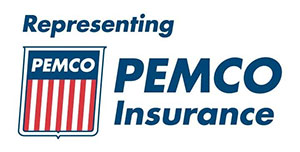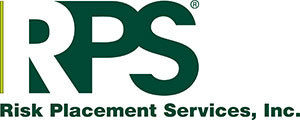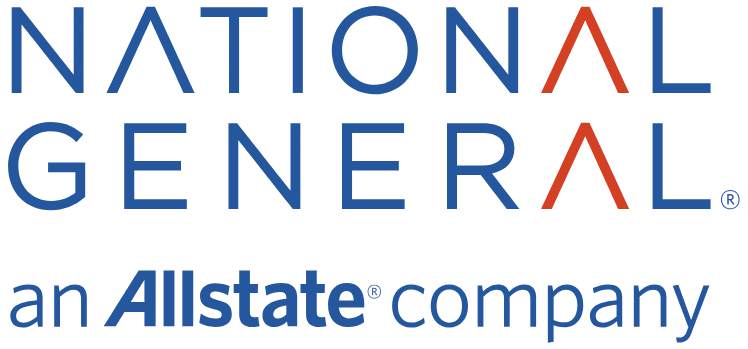- Washington State House Bill 2544, Chapter 360 Laws of 2002, Insurance Credit History (PDF)
- Choosing and Using Your Auto Insurance Coverage (PDF)
- Choosing and Using Your Homeowner Insurance Coverage (PDF)
- Updated 2008 National Seismic Hazard Map (PDF)
- Food Safety: Severe Storms and Hurricanes (PDF)
- National Do Not Call Registry (PDF)
- FTC Documents:
- Get Smart About Your Insurance Coverage: Know Your Policy (PDF)
Here are some documents written to help you by the Washington State Office of the Insurance Commissioner
- Credit Scoring and Insurance: How insurance companies use credit information.
- The Effect of Credit Scoring on Auto Insurance Underwriting and Pricing
- Insurance Credit Scoring
Property Terms, Concepts and Policy Provisions
B
B
Binder
A Binder (a.k.a. unconditional receipt) is a written document that provides temporary-guaranteed coverage prior to the issued policy; however, a binder may be verbal and no premium is required for coverage to be in-force. Binders are good for a maximum of 90 days (may be extended with the Commissioner’s written permission).
The binder is in effect until the policy is issued. When the property or casualty policy is issued, the licensed agent must countersign the policy. This will verify that a licensed agent sold the insurance and that the licensed agent is licensed in the state in which the insurance was written. The counter signature is usually required on the front page of the policy.
Bodily Injury vs. Property Damage
Bodily Injury means bodily harm, sickness or disease, except a disease which is transmitted by an insured through sexual contact. Bodily injury includes required care, loss of services and death resulting from covered bodily harm, sickness or disease. Property Damage is defined as physical injury to tangible property, including all resulting loss of use of that property. Bodily injury (BI) and property damage (PD) are primary coverages of liability insurance.
Blanket coverage
See Variations in Writing Limits
C
C
Certificate of Insurance
Certificate of Insurance represents proof that a policy and coverage exists.
Consumer Report
- A Consumer Report may be run by the insurer when underwriting the policy (moral risk)
- The Fair Credit Reporting Act provides consumer protection in insurance transactions.
- The applicant must be advised that a report will be requested and be provided the name and address of the reporting agency.
- Should any information on a consumer report be challenged, if not proven by the reporting agency to be accurate or valid, must be removed from the file within 30 days.
- The individuals’ authorization must be obtained in order to run a credit check
Concealment
See Representation, Misrepresentation, Warranty, Concealment and Fraud
D
D
Deductible
Deductible is the amount that an insured pays first before the insurer pays. Can be a dollar amount or percentage.
- Per Occurrence means an accident (unintended, unforeseen or unexpected event), including continuous or repeated exposure to the same general harmful condition. One deductible is charged regardless of the number of claims.
- A Per Claim deductible is charged for each claim in any one accident or occurrence. For example, a painter painting a house may cause damage to several cars from overpay. Each claim will require a separate deductible.
Direct Loss
Direct Loss is a loss caused by a peril such as a house fire or car collision.
The New York SFP was the standard fire contract from 1943 to 1977. In 1977 ISO developed the Dwelling 77 Program which is nothing more than an extension of the SFP. Three dwelling property forms are available. They are basic, broad and special. The different forms provide different degrees of coverage and the names given to the forms reflect a progressive expansion of both perils and losses covered. In 1989 ISO revised the Dwelling ‘77 Program; however, this text will deal mainly with the ‘77 Program.
Casualty (liability) and theft are not covered on Dwelling policies (DP). These coverages need to be endorsed on the dwelling policy or from the insured’s homeowners policy.
E
E
Endorsements
Endorsements are provisions added to a policy which broaden or restrict coverage or change a current provision. They may also be called a rider. An endorsement is not valid unless signed by an executive officer of the company and must be attached to and made part of the policy.
Estoppel
Estoppel is the legal principle that anyone whose words or actions have caused a waiver of a right cannot later reclaim the waived right if the other party has relied upon it. For example, an insured informs the agent that he has pit bull dogs, the agent writes the application and the insurance company issues the policy. Should the dogs bite someone, the insurance company has waived its right to deny coverage and it is “estopped” from not paying the claim.
F
F
Fair Market Value
See Loss Valuation
Fire
Fire is combustion accompanied by a visible light (a flame or glow). A friendly fire is intentionally set and remains within its container or intended limits. A hostile fire is one that escapes its intended limits. A fire in a fireplace is a friendly fire, but when a spark ignites nearby curtains, it starts a hostile fire. Only hostile fires are covered under fire policies.
Fraud
See Representation, Misrepresentation, Warranty, Concealment and Fraud
G
G
Guaranteed Replacement Cost
See Loss Valuation
Fire
Fire is combustion accompanied by a visible light (a flame or glow). A friendly fire is intentionally set and remains within its container or intended limits. A hostile fire is one that escapes its intended limits. A fire in a fireplace is a friendly fire, but when a spark ignites nearby curtains, it starts a hostile fire. Only hostile fires are covered under fire policies.
H
H
Hazard
- Hazard is anything that increases the chance of a loss, such as:
- Physical—dirty windshields, broken headlights or severely worn car tires.
- Morale—carelessness of attitude or irresponsibility. This would include failing to lock the front door of a house, or failing to lock a drawer containing cash and other valuables because any loss would be covered by insurance.
- Moral— arises from people’s habits and values. Dishonesty. Examples of poor moral risks include: intentionally setting a fire in order to collect the insurance, filing a false claim, having excessive speeding tickets, or having a poor credit report. A claimant may be charged wills a Class “C” felony for filing a false claim.
Homeowners
Homeowners policies are multi-line policies, which means they combine property and casualty coverage in the same policy. It conveniently packages a range of coverages related to a specific exposure, and it reduces the number of policies an insured has to buy. Two major differences between the dwelling and homeowners policies are that homeowner forms provide slightly broader coverages, and the combination of property and liability coverages is automatically included as part of the policy.
I
I
Indemnification
Indemnification means to restore a person to his or her original position before the loss, with no gain. Property and Casualty contracts are contracts of indemnification.
Indirect Loss
An indirect loss is a loss which is a result of a direct loss. Indirect losses involve money, whether from loss of income, loss of business, or expenses for lodging and meals after a house fire. Indirect losses are only paid jf the “direct loss” is caused by a covered peril.
Insurable Interest
Insurable Interest is the potential for financial or economic loss in a person or in a loss of property. Interest or ownership must exist at the time of loss.
Insurance Services Office (ISO)
A not for profit organization established by insurance companies to write and rewrite policy forms, compiles rating information, etc. ISO is the principal rate-making organization for property and casualty insurers.
The Insurance Services Office made major revisions in 1976 to improve the format and streamline the wording. In 1982 it was revised again and the finalized product was restated as the Homeowners ‘84 (edition) program. In 1991, ISO again made some minor adjustments, mostly to update and clarify the policy language. This text will deal mainly with the HO 1984 program.
Insured
See Named Insured
L
L
Liability
Liability means being legally responsible or negligent for someone else’s loss. This is also known as third party coverage. Legal liability is covered within the body of law called the Tort Law. A tort is a legal wrongdoing other than a crime or breach of contract. Types of liability include absolute, strict, vicarious (a.k.a. imputed) and negligence. These items will be discussed in more detail in the casualty text.
Loss Valuation
Actual Cash Value
Actual Cash Value means the cost of repairing the damage, less reasonable depreciation (wear and tear, deterioration and obsolescence).
Replacement Cost
Replacement Cost means the current cost, at the time of loss, to repair or replace the damaged property with new materials of like kind and quality, without deduction for depreciation but not more than the policy limit.
Guaranteed Replacement Cost
Guaranteed Replacement Cost means the insurance company will indemnify losses even if the cost to repair or replace exceeds the coverage limit.
Fair Market Value
Fair Market Value means what the property can be sold for. Auto insurance losses in the State of Washington must be settled on a “fair market” basis.
Stated Value Coverage
Stated Value Coverage, a.k.a. Agreed Value. Property is insured for a set value. The value is determined on the policy date, not at the time of the loss
Lloyds Association
A group of individuals who band together to assume risks are sometimes called a Lloyds association. If a loss occurs, each individual is personally responsible for his share of the loss. Lloyds of London is an institution within which individual underwriters accept or reject the risks offered to them.
M
M
Monoline vs. Package Policies
One coverage policies are monoline and policies with more than one line of coverage are package policies. a.k.a. multi-line policies. For example, a Commercial Package Policy that covers the building and also the general liability is a multi-line or package policy. However, in this same example, if only general liability was covered, then it would be considered a monoline policy.
Misrepresentation
See Representation, Misrepresentation, Warranty, Concealment and Fraud
N
N
Named Insured
In an insurance policy there are differences between a named insured and an insured. The named insured is the person, persons or business actually named as the named insured in the policy declarations. An insured is anyone who may be covered by the insurance. A named insured generally has greater obligations and responsibilities under the policy. Commercial policies have started using the term first named insured. The first named insured is the primary party responsible for carrying out contractual duties.
Negligence
Negligence is the failure to use the proper care that is required to protect others from an unreasonable chance of harm. It is through negligence that someone becomes responsible or legally liable for someone else’s loss. The Prudent Person Rule is a theory that says you are negligent when you have failed to do what a prudent person would do in similar circumstances.
O
O
Occurrence vs. Accident
An accident is something sudden and unexpected which took place at a specific time and location. An occurrence means an exposure to conditions which resulted in unexpected injury or damage, but the event did not have to be sudden and subject to repeated exposure to the same conditions. Policies today provide coverage on an occurrence basis which means an accident, including continuous or repeated exposure to the same harmful conditions, which result in bodily injury or prnperty damage, which is neither expected nor intended by the insured.
Other Insurance
Other Insurance provision means that indemnity may be primary (pays first) or excess (pays after the primary coverage has been exhausted) or may be paid on a pro-rata liability basis should there be multiple policies with different companies, each company covering the same loss. This provision prevents over-insurance.
P
P
Peril
Peril is anything that causes a loss, i.e., fire, wind, hail. Basic, Broad and Special Form policies insure against different perils. Proximate Cause exists when there is an uninterrupted chain of events resulting in a loss or the effective cause of loss or damage. For example, if collapse is not covered but a fire causes the building to collapse, then the loss is covered since the proximate cause of the loss was a covered peril (fire).
Mr. X is injured when his old un-serviced hot water heater explodes. The peril is explosion and the hazard is an old un-serviced water heater.
Act of God
An event arising out of natural causes with no human intervention which could not have been prevented by reasonable care. For example: earthquake, flood, lightning or strong winds. Some acts of God are covered and some are not.
Pro rata liability
Pro rata liability means the distribution among several insurance companies for payment of a claim. For example, if an insured has an auto policy of equal coverage with Farmers and Allstate and a loss occurs, each company would pay half the claim.
R
R
Rating and Premium Determination
The most common variables used in rating and determining premiums are: age, past loss records, driving records, territory, type of coverages, limits, deductibles, value of the property being insured, driving distance and marital status.
Experience rating provides for a modification of a class rate for an individual based on a comparison of his loss experience with the class. In property and casualty insurance for example, people with bad loss records will pay a higher premium than those with no losses. Adjustments (such as a rate increase) will usually apply to the next policy period upon renewal.
Replacement Cost
See Loss Valuation
Representation, Misrepresentation, Warranty, Concealment and Fraud
Representation
Representation is a statement by the insured which he believes to be true. Statements made on an insurance application are deemed to be representations.
Misrepresentation
Misrepresentation is lying about information asked on the application. If the misrepresentation is material, it can void coverage. Material information has direct bearing on the decision to issue or not to issue an insurance policy.
Warranty
A Warranty is a written guarantee (in all respects and details) in the policy. A breach of a warranty may cause a suspension of the policy and may void all claims.
Concealment
Concealment is the withholding of material facts from the insurance company. Coverage may be voidable if it is found to be of fraudulent intent.
Fraud
Fraud is similar to misrepresentation but involves a false statement intended to deceive and induce the insurance company to part with something of value.
Reserves
Reserves are amounts held on deposit by the insurance company to pay past, present and future claims.
Risk
Risk is the uncertainty of loss. The purpose of insurance is to deal with risk. Without risk there is no need for insurance. Only pure risk is insurable. Pure risk means that only a chance of loss is present and no chance of gain.
S
S
Scheduled coverage
See Variations in Writing Limits
SFP
The New York Standard Fire Policy (SFP) has been one of the most widely used fire insurance contracts. Early in this century it became a standard for the industry and was quickly adopted by nearly every state in the country. The New York form was revised in 1943 and the 165-line policy became the foundation upon which most of today’s property insurance coverage has been built. Standard provisions, exclusions, terms and concepts from the New York SFP have since been included in our modern day forms.
Specific coverage
See Variations in Writing Limits
Stated Value Coverage
See Loss Valuation
Subrogation
Subrogation is the transfer to the insurance company, by the insured, of the insured’s rights to recover against a third party when the insurance company has paid for the loss. The insurance company stands in the insured’s place. Very closely related to indemnification.
V
V
Variations in Writing Limits
Insurance limits may be written in a variety of different ways. The limit of liability is the most the insurer is responsible to pay under the policy. The following terms refer to the manner in which the limits of insurance apply.
- Specific coverage provides a specific amount of insurance for specific types of property.
- Scheduled coverage is used to provide different amounts of insurance for different types of property.
- Blanket coverage provides a single amount of insurance that may apply to different types of property.
- (Combined) Single Limit: one figure shows the maximum the company will pay for all BI & PD liability arising from one occurrence, i.e., $100,000.
- Split Limit: three figures show the maximum the company will pay for liability resulting from one occurrence, i.e., 100/300/50 which means; $100,000 BI limit for each person, $300,000 B! total coverage for the accident, and $50,000 for PD.
- Occurrence Limit is the maximum amount available per accident.
- Aggregate Limit is the maximum amount available for the policy period.
W
W
Waiver
The voluntary relinquishment of a known right by the insurer. The waiver can be written, oral or can be implied by conduct. The principle of estoppel results from a waiver.
Warranty
See Representation, Misrepresentation, Warranty, Concealment and Fraud







